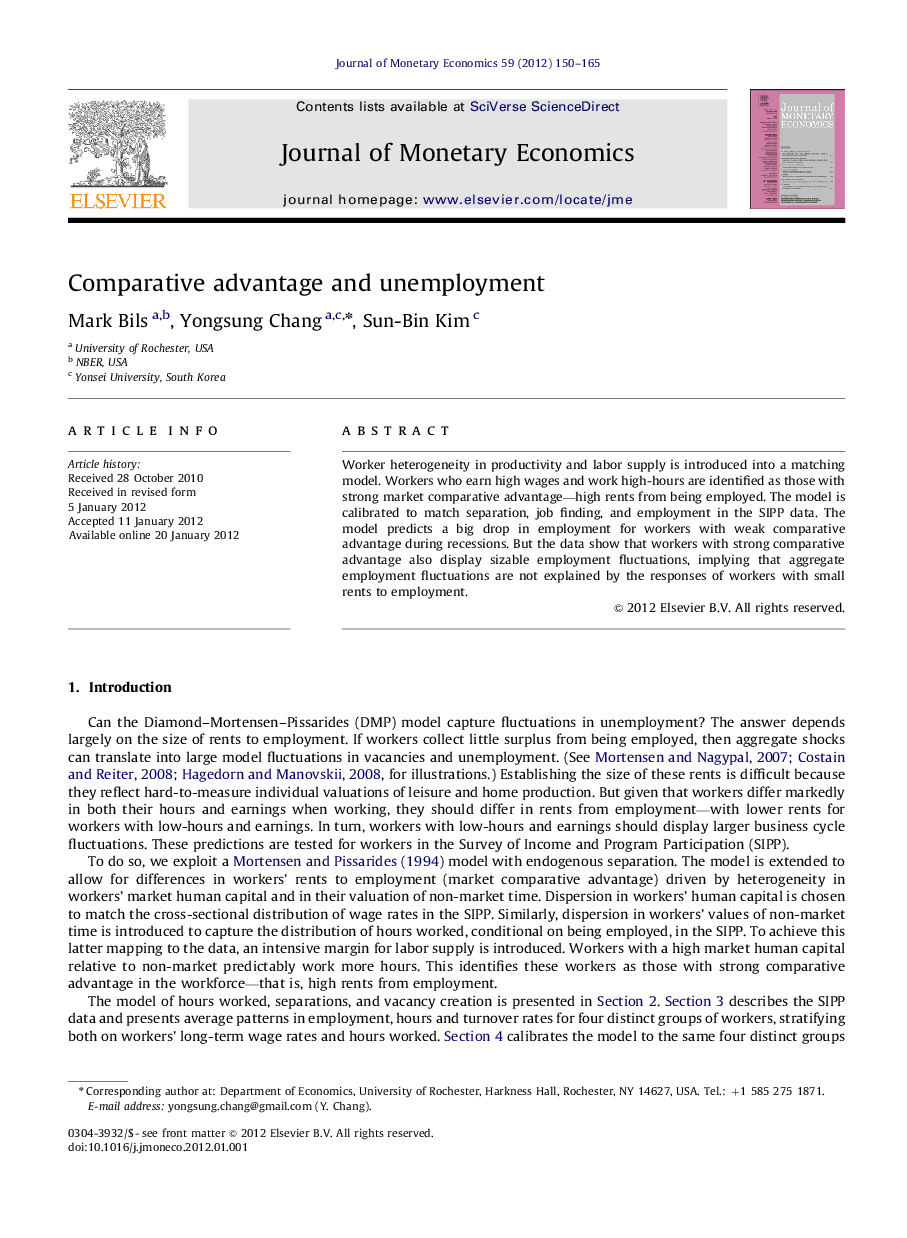| Article ID | Journal | Published Year | Pages | File Type |
|---|---|---|---|---|
| 966551 | Journal of Monetary Economics | 2012 | 16 Pages |
Worker heterogeneity in productivity and labor supply is introduced into a matching model. Workers who earn high wages and work high-hours are identified as those with strong market comparative advantage—high rents from being employed. The model is calibrated to match separation, job finding, and employment in the SIPP data. The model predicts a big drop in employment for workers with weak comparative advantage during recessions. But the data show that workers with strong comparative advantage also display sizable employment fluctuations, implying that aggregate employment fluctuations are not explained by the responses of workers with small rents to employment.
► Worker heterogeneity is introduced into a matching model. ► Identify workers with high wages and high-hours as those with strong comparative advantage. ► The model is calibrated to match separation, job finding, and employment in the data. ► Employment fluctuations are not explained by workers with weak comparative advantage.
